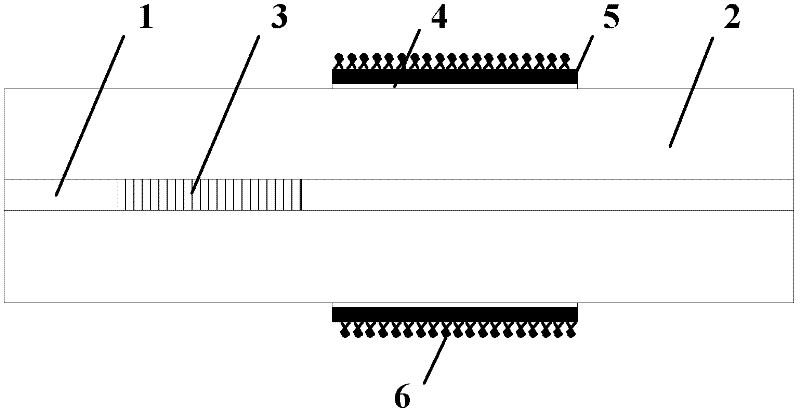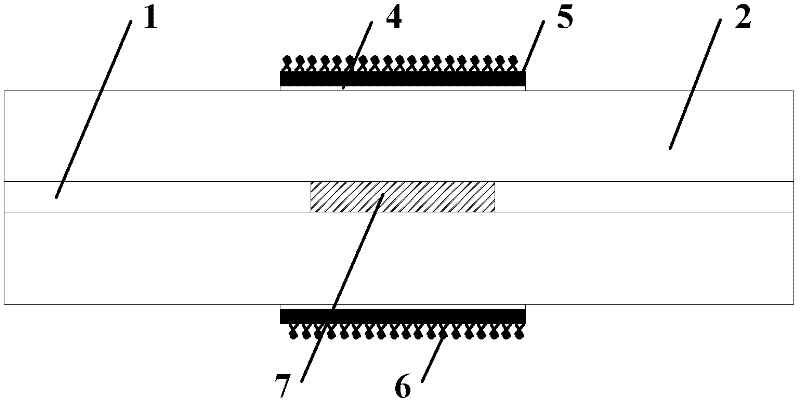Fiber surface plasmon resonance glucose sensor with temperature self-compensation
A glucose sensor and surface plasmon technology, which is applied in the field of ion resonance glucose sensor, can solve the problems of large measurement error, complex composition, easy interference in measurement, etc., and achieve the effects of simple production, simple binding process and simple structure.
- Summary
- Abstract
- Description
- Claims
- Application Information
AI Technical Summary
Problems solved by technology
Method used
Image
Examples
Embodiment Construction
[0043] The fiber surface plasmon resonance glucose sensor with temperature self-compensation of the present invention will be described in detail below with reference to the embodiments and the accompanying drawings.
[0044] Such as Figure 1 ~ Figure 4 As shown, the optical fiber surface plasmon resonance (SPR) glucose sensor with temperature self-compensation of the present invention includes an optical fiber core 1, the outer periphery of the optical fiber core 1 is wrapped with an optical fiber cladding 2, and the optical fiber is single-mode In the optical fiber, a fiber grating 3 is written on a section of 10-30 mm of the fiber core 1, and the fiber grating 3 is a long-period fiber grating or a tilted fiber grating. A section of 15-30 mm of the optical fiber cladding 2 has a chromium layer 4 , a gold film 5 and a glucose molecule-specific adsorption layer 6 sequentially from the inside to the outside. On the outer surface of the gold film 5 is fixed a layer of glucose ...
PUM
| Property | Measurement | Unit |
|---|---|---|
| thickness | aaaaa | aaaaa |
| thickness | aaaaa | aaaaa |
| length | aaaaa | aaaaa |
Abstract
Description
Claims
Application Information
 Login to View More
Login to View More - R&D
- Intellectual Property
- Life Sciences
- Materials
- Tech Scout
- Unparalleled Data Quality
- Higher Quality Content
- 60% Fewer Hallucinations
Browse by: Latest US Patents, China's latest patents, Technical Efficacy Thesaurus, Application Domain, Technology Topic, Popular Technical Reports.
© 2025 PatSnap. All rights reserved.Legal|Privacy policy|Modern Slavery Act Transparency Statement|Sitemap|About US| Contact US: help@patsnap.com



